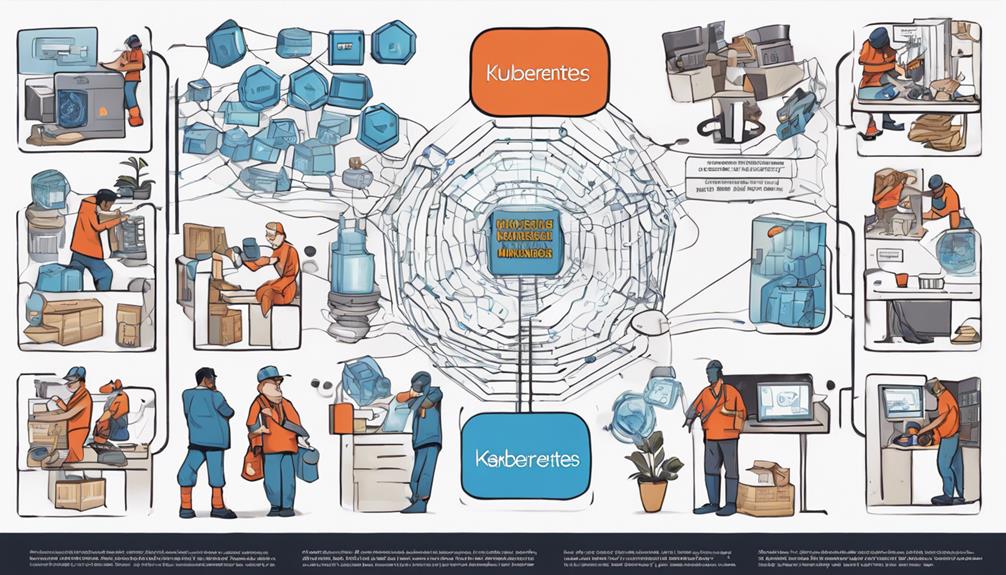Choosing between a service mesh and native ingress depends on your needs. If you have a simple setup with basic routing, a native ingress like NGINX or Traefik may suffice, offering easy management. But if you require advanced traffic control, security, and observability for complex microservices, a service mesh provides detailed insights and policies. To make the right decision, consider your application’s complexity and future growth—exploring further will help you align your choice.
Key Takeaways
- Use native ingress for simple routing, minimal security, and basic load balancing needs to reduce complexity.
- Choose a service mesh for complex microservices environments requiring advanced traffic control and security policies.
- Native ingress offers easier setup and management, while service mesh provides detailed observability and telemetry.
- For secure, managed communication between services, a service mesh with mutual TLS is preferable.
- Evaluate application complexity, security, and observability needs to select the solution that best fits your environment.

Are you trying to decide between using a service mesh or a native ingress for your Kubernetes environment? This choice can profoundly impact how you handle traffic management and security policies across your applications. Native ingress controllers, like NGINX or Traefik, are straightforward to set up and manage, making them ideal for simple routing and basic load balancing. They excel at directing external traffic into your cluster and are often easier to integrate if your needs are minimal. However, when your application landscape grows more complex, you’ll find native ingress’s capabilities for traffic management somewhat limited. They typically offer basic routing rules and SSL termination but lack fine-grained control over traffic flow, retries, or circuit breaking.
A service mesh, on the other hand, provides a more extensive solution. It operates at the network level, giving you fine-tuned control over traffic management, including advanced load balancing, traffic shifting, and retries. This is especially useful when deploying microservices that require sophisticated routing for canary releases or A/B testing. Beyond traffic management, a service mesh elevates your security policies by enabling mutual TLS encryption between services, ensuring data in transit stays protected. You can also enforce security policies uniformly across your services, simplifying compliance and reducing configuration errors. This centralized control over security policies allows you to define and update rules without modifying individual services, improving your overall security posture. Additionally, a service mesh can provide detailed observability**** and telemetry, making it easier to monitor and troubleshoot traffic issues across complex deployments.
While native ingress controllers are adequate for straightforward use cases, they often fall short when it comes to observability and control as your needs evolve. Service meshes integrate with telemetry tools to offer detailed insights into traffic patterns, latency, and errors, making it easier to troubleshoot and optimize performance. They also facilitate policy enforcement, such as rate limiting or IP whitelisting, at a granular level, which native ingress might handle only at the edge. If you anticipate needing dynamic traffic management or complex security policies, a service mesh’s features are well worth the added complexity.
Frequently Asked Questions
How Does Cost Compare Between Service Mesh and Native Ingress Solutions?
When considering cost, you should conduct a thorough cost analysis and vendor comparison. Native ingress solutions often have lower upfront costs because they’re simpler and built into Kubernetes, reducing infrastructure and management expenses. Service meshes, however, may incur higher costs due to added complexity, resource consumption, and licensing fees. Weigh these factors carefully to determine which option offers better value for your specific needs and budget constraints.
What Are the Best Practices for Migrating Existing Applications to a Service Mesh?
Imagine guiding a ship through calm waters, you should embrace a gradual shift when migrating applications to a service mesh. Start with non-critical services, then refactor components incrementally, ensuring stability at each step. Keep a close eye on monitoring and testing, adjusting your course as needed. This approach minimizes risks, maintains uptime, and allows your team to learn and adapt, making the migration smoother and more manageable.
How Do Security Features Differ Between Service Mesh and Native Ingress?
You’ll find that security features differ markedly between service mesh and native ingress. A service mesh offers advanced traffic management and observability features, enabling you to implement mutual TLS, fine-grained access controls, and encrypted communication seamlessly. Native ingress provides basic security, primarily through SSL termination and simpler access controls. For enhanced security and detailed traffic insights, a service mesh is your best choice, whereas native ingress suits simpler, less demanding environments.
Can Both Approaches Be Used Simultaneously in the Same Environment?
Think of your deployment as a layered architecture, like a well-crafted sandwich. Yes, you can use both approaches simultaneously in a hybrid deployment, each serving different layers. This combo lets you harness the strengths of service mesh for complex security and observability, while native ingress handles straightforward traffic management. By blending these tools, you create a flexible, resilient environment that adapts effortlessly to your evolving needs.
What Impact Do These Choices Have on Application Performance and Latency?
You should consider how your choice affects traffic overhead and latency impact. Using a complex ingress or service mesh can introduce additional processing, increasing traffic overhead and potentially adding latency. Native ingress options often offer lower latency since they handle traffic more directly. Balancing these factors is key; if performance is critical, opt for solutions with minimal latency impact, but also weigh management features and scalability needs.
Conclusion
Ultimately, choosing between a service mesh and native ingress is like choosing your own adventure—each path offers unique benefits. Think of it as steering a river; a native ingress might be your steady current, simple and direct, while a service mesh is the complex river system, offering greater control. Know your needs, weigh the complexity against your goals, and remember, like Odysseus, your journey’s success depends on making the right choice for your voyage ahead.









